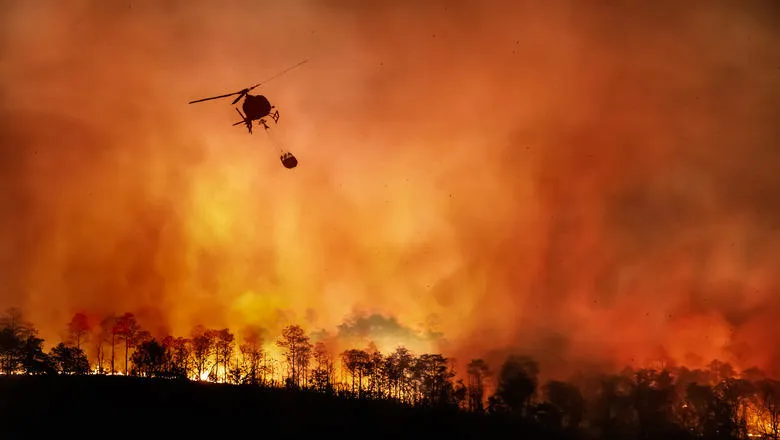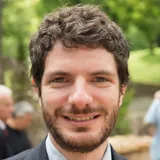My project, FIREMOD, aims to provide a fundamental physical model of fire that takes all the accuracy of fire prediction in the lab and applies it to the real world... This will allow safety professionals to accurately predict the spread and chance of wildfires and take steps to prevent them before they happen."
Dr Francesco Restuccia
05 September 2024
King's engineer receives prestigious European Research Council funding for work on wildfires
Dr Francesco Restuccia’s work will help predict and prevent the spread of wildfires across the world.

Dr Francesco Restuccia, Senior Lecturer in Engineering at the Department of Engineering, has been awarded an ERC Starting Grant to create a model that will help predict when and why wildfires spread, with the aim of saving lives and billions in property damage.
In the past year, wildfires have cost the EU approximately £3.4 billion in damage, with fires in the Mediterranean and across California claiming multiple lives. In 2023, 2170 mega tonnes of CO2 emissions were released into the atmosphere by wildfires and over 1 billion people were impacted by wildfire smoke, posing a severe danger to respiratory health.
Without intervention, experts suggest that the world is likely to have 14% more wildfires by the end of the decade and 50% more by the end of the century.
While ways to predict the spread of these destructive fires exist, they either lack accuracy or widespread applicability to real-world scenarios. While some can predict isolated elements of a fire’s behaviour, such as how the size of a smouldering fire may impact how it erupts into flames, these models fail to factor in how other influences like fuel impacts the spread.
This means that these lab-based models often can’t be applied to the complex wildfires in the field where size, fuel, environment and chemical characterisation come together to inform a fire’s spread.
Dr Restuccia said, “Despite the fact that fire has been around since time immemorial, we know little about its fundamentals. We’ve known roughly how flames work since the 1860s, leading us to model how very specific changes might impact the way a flame behaves. What we’ve been missing is a unified theory of fire, how things like chemical composition of fuel, wind speed, humidity and a host of other variables impact fire and its spread when considered concurrently.
“My project, FIREMOD, aims to provide a fundamental physical model of fire that takes all the accuracy of fire prediction in the lab and applies it to the real world, taking all these variables and calculating exactly how they come together to influence wildfires like those people see on the news every summer. This will allow safety professionals to accurately predict the spread and chance of wildfires and take steps to prevent them before they happen with appropriate fuel management strategies. With time, the chance of wildfires on the scale of those seen in Canada this summer will hopefully be cut drastically.”
“Despite the fact that fire has been around since time immemorial, we know little about its fundamentals... What we’ve been missing is a unified theory of fire, how things like chemical composition of fuel, wind speed, humidity and a host of other variables impact fire and its spread when considered concurrently."
Dr Francesco Restuccia
By providing a fundamental model that can work across environments, FIREMOD could be applied to areas as diverse as the shrubland of Algeria to the forests of the US, with both countries able to take steps to affect the conditions from which wildfires are likely to emerge.
This is particularly important as wildlands which are traditionally prone to wildfires are being increasingly urbanised in areas like California, presenting a growing danger of wildfires reaching highly populated areas. As climate change pushes global temperatures upward, the model will also be able to see how it may affect the chance and spread of wildfires.

